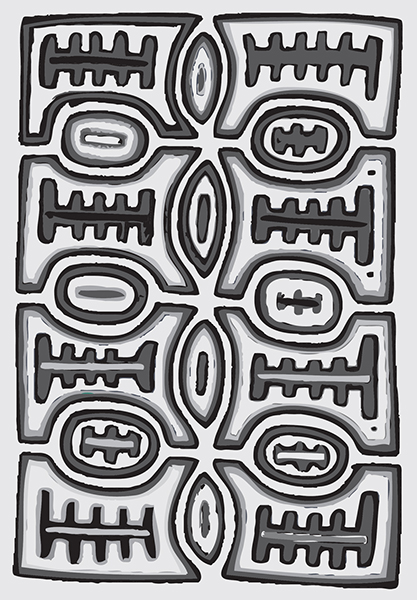
PART I
La Historia: Latino Fusion and Hybrid Vigor
LATINOS WHO LIVE IN the Southwest are keenly aware that less than 175 years ago—a historical hiccup—one-third of the continental United States was México. Other people sense this when they traverse New Mexico, or states with Spanish names like Arizona (arid zone), Montana (the land of mountains), or Nevada (the place where it snows). Cruising the California freeways, passing city after city named in the Spanish tradition for patron saints (San Diego, Santa Ana, Santa Monica, Santa Barbara, San Jose, San Ramon, San Francisco, and San Rafael), any driver might find it almost impossible to ignore their Hispanic roots—not to mention the bendición that comes from having so many santos presiding over cities or watching over us as we drive.
It is perhaps in El Pueblo de Nuestra Señora la Reina de Los Ángeles del Río de Porciúncula (the village of Our Lady, the Queen of the Angels of the River Porziuncola), now known as Los Angeles, that the United States’ Spanish Mexican heritage is most apparent. Surfacing like fog lifting off the California coast, the past is etched into street names, historical monuments, the profuse mission architecture, the faces of the brown-skinned children, the Spanish exchanged on street corners, and the whiff of warm tortillas. The only city with more residents of Mexican descent is Mexico City.1
The truth of the matter, however, is that most Americans don’t acknowledge these historical roots. Even with these antecedents splattered like graffiti on freeway bridges, city walls, and street corners, the past is tucked away, forgotten.
The people of Spanish, Mexican, and Indigenous descent, whose progeny are the modern-day Hispanics, herded the cattle and ran the ranchos, planted the corn, beans, and squash, carved out the mines, laid the railroad tracks, and provided economic muscle. The whitewashed history of the United States makes scant reference to these contributions. Yet to integrate their power, Latinos must know their history.
Contemporary America is speeding into the future and not looking in the rearview mirror. Like the great cottonwood trees that grow in the arid Southwest, however, people and societies have roots that anchor them. Roots ground us, holding us firm when the winds of change howl, offering perspective about what is lasting and significant, and nourishing growth and future discovery. The past safeguards the values, traditions, and wisdom of previous generations. History gives birth to the present and is the foundation for the future. If Latinos are integral to America’s past, then surely they will be a powerful force influencing our future.
Mucho Gusto: An Introduction to Latino Origins
THE STORY OF HISPANIC origins begins centuries before the founding of the United States, and even before the conquistadores made their tumultuous journey across the vast Atlantic. Spain, considered the motherland of Hispanics, etched a unique landscape that blended many races, cultures, and nations. This cultural permeability is a distinctly Spanish characteristic and flourishes today in the expansive diversity of Hispanic people.
We begin with Columbus landing in Hispaniola and the conquistadores penetrating the Americas. The Spanish conquest could have washed away the footprints of the Indigenous people. Instead, racial blending produced a resilient progeny, the genetic origins of today’s Latinos. The first chapter reveals a beautiful creation story prophesying the birth of Latino people and the advent of the Mestizos, or multicultural people.
It is important to note that Latinos are not just a US phenomenon; like the resilient sparrow that flies across many lands to find a home, Latinos are scattered across this hemisphere and many other parts of the world. The evolution of US Latinos is intertwined with the history of their Indigenous and Spanish ancestors.
In chapter 2, we see how Spanish influence profoundly affected our nation’s development. This is followed by a slice of US history, including Manifest Destiny, which proposed that Latinos and other people of color had to learn the superior ways of White civilization. While today this may seem like a historical anomaly, it raises the concept of destino—the belief that a country or a people may have a distinct contribution to make.
The current state of US Latinos and the cultural explosion that heralds the Latinization of America foretells a transformation of our country. Latino destino, explored in the final section, presents an intriguing concept about the distinctive contribution and tremendous influence US Latinos have today and their potential for shaping a new American future.
